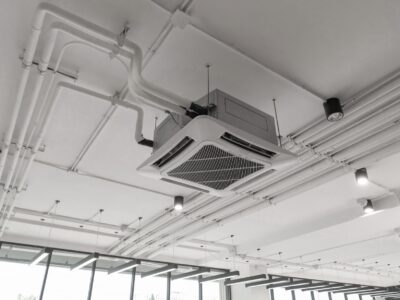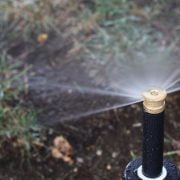Tractors have proven to be useful tools, especially if you practice agriculture. It simplifies work and speeds the execution rate. Now, with all these benefits, it could be very catastrophic for your utility tractor to stop functioning on the day you’ve planned to do myriads of activities on your farm. This could be due to many possible issues. However, you can mitigate them no matter the issue by practicing preventive maintenance on your tractor. This article will give you some of the practices to adopt to ensure your machinery is in pristine condition when you need it the most.
Here are the following preventive maintenance tips to implement:
1. Read The Manufacturer’s Manual
The first step in taking care of your utility tractor is familiarizing yourself with its manufacturer’s recommendations through the manual. A manual will give instructions on what needs to be done and when to do it. It will also inform you of the parts that need regular replacement and their specifications.
Besides learning the maintenance process, it’s essential to learn how tractors run in perfect condition. With this knowledge, you’ll be in a position to notice if something is amiss as you work with it.
2. Practice Routine Maintenance
Routine maintenance is an essential aspect of preventive maintenance. It utilizes the concept that prevention is better than cure.
Schedule a certain timeframe when you’ll always carry out routine maintenance. It could be every three months or every quarter of the year.
Consider having a checklist that indicates all the items you need to inspect during routine checks. This checklist should include the simple aspects you check daily and the complex ones you occasionally check. Having a checklist ensures that you don’t forget to check out any component during an inspection. Not exhaustively performing checks befits the purpose of preventive maintenance since you might miss a part that has an underlying issue. You won’t notice this until it has progressed and caused damage.
To ensure you can execute routine maintenance adequately, you need to have a special toolbox containing all the equipment you might need to perform an inspection. You wouldn’t want to skip a crucial step just because you lack the necessary equipment.
As stated previously, practicing routine maintenance puts you in a position to identify and solve issues in their earlier stages. This eliminates the situation wherein buying a new tractor is your only solution due to irreversible damage.
3. Perform Daily Checks
Just like you check your car daily before driving it, you need to do the same with your tractor as you do for your fence gate swing.
These daily checks involve assessing the small but crucial things that might affect your tractor usage. Some of the inspections you could do involve its engine, coolant, battery, and brakes. Furthermore, ensure you inspect all the brakes, such as the hand, foot, and parking brakes.
When it comes to brakes, assess their functionality; can you easily move them? What are their response rates? Does the tractor react instantly to the brakes, or does it take a few seconds? If the breaks aren’t functioning efficiently, you need to replace them immediately.
With this assessment, you’ll pinpoint if your tractor can execute your day’s work efficiently or not. The failure of some of these components could lead to serious damages, injuries, and even death.
4. Change Your Oils And Filters

Farmer mechanic repairing blue tractor engine. Repair agricultural technology at sunset.
Oil is an essential component of your tractor, ensuring your engine is lubricated and runs smoothly. For the oil to provide efficient lubrication, it needs to be clean.
Therefore, you need to change your engine oils regularly. How then do you know it’s time to make the change? Get access to the sump of your tractor, which holds the oil, and pull out the dipstick. Wipe it down with a soft cloth to clean it. Dip the dipstick back in the sump fully, then pull it out. You now need to inspect the oil as it appears on the stick.
If its color is quite dark and of thick consistency, it needs to be changed. Running an engine with dirty oil wears out the engine since it tends to erode its parts. Make sure to use the right oil depending on your tractor’s model and its manual.
It would be best to also change your tractor’s filters regularly. Filters ensure your engines get adequate airflow and prevent debris accumulation. When your tractor runs with dirty filters, there’ll be inadequate airflow, and the smoke released during combustion won’t leave your engine. This will form soot and coat your tractor’s spark plug, interfering with the igniting process of your tractor, which often leads to rapid wear and tear.
5. Use The Correct Replacements
Once in a while, you might need to replace parts that are no longer efficient or have broken down. You need to ensure they’re appropriate for your tractor.
First, they need to integrate well with your tractor’s functions. The new parts shouldn’t in any way cause its deterioration and malfunctioning. Please use the standards written down in the tractor’s manual for its different parts.
Sizing is also a crucial aspect to consider. Any component you purchase shouldn’t be too big or too small for your tractor. If a part is too big, it might lead to inefficiencies where your tractor executes your farming needs at a slow speed. If too small, your tractor will be too powerful for them, leading to constant wear and tear and replacements. Ensure you select the right size of replacement parts for your tractor.
Conclusion
As seen in this article, preventive maintenance doesn’t require much from you, except for discipline in inspections and extra effort in following the manual unless you want to ruin your enclosed patio. Follow the tips given in this article to ensure that you’re always ahead of mechanical problems regarding your tractor.














Comments